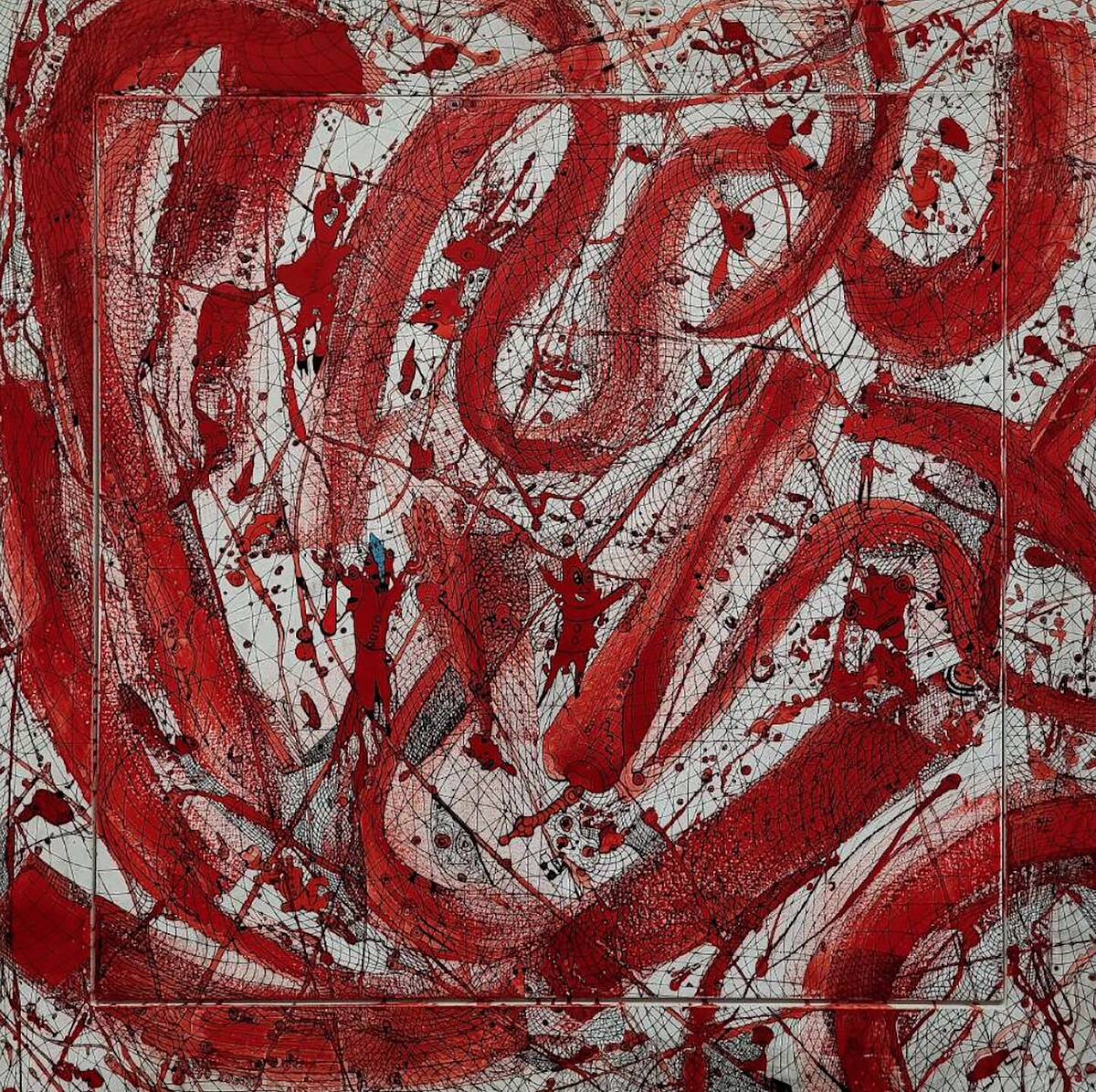






"Ultimate Beauty" curated by Motoichi Adachi and Kyoko Sato
Artists:
Takuya Sugiyama, Yuji Hamamura, Erika Harrsch, Eva Petric, Johan Wahlstrom
January 25 - February 1, 2023 | 12-6pm (Jan 28, Feb 1 12-3pm) | Closed on January 27, 29
Opening Reception: Wednesday, January 25, 2023, 6-8pm
Motoichi Adachi, an Emmy Award-winning writer in Tokyo, and Kyoko Sato, a New York-based curator known for her introduction of Japanese culture into New York’s contemporary art scene, have come together to launch a new art exhibition series. The series will bring Japan-based artists whose works, regardless of genre or background, to the world’s cutting-edge art scene alongside – and in conversation with – leading international and New York-based artists, effectively interacting with and inspiring each other.
I cut through the art world with the sensibility that has long been active in the world of Japanese television. We want to bring a new wind of free and unrestrained ideas to a world that values old traditions. Beautiful works are beautiful and interesting works are interesting, even if they are not from famous art universities or patronized by influential galleries. We want to let attractive artists run amok in the world. I would like to try an unconventional challenge this time.
— Motoichi Adachi
American, New York based composer and music theorist John Cage (1912-1992) said, “The first question I ask myself when something doesn’t seem to be beautiful is why do I think it’s not beautiful. And very shortly you discover that there is no reason.” In my work as a curator, I’m not looking for the fame or prestige of the artists, but the way their work makes me feel. To put it simply, beauty comes down to whether or not it stirs my soul: it must evoke emotion. For the first exhibition of the series, I have chosen a simple and fundamental theme: ultimate beauty. How can we decide what beauty is, and what does it have to do with art, why it’s made, and the value we assign it?
After the Second World War, the center of art shifted from Europe to New York. With a new influx of artists, property prices soared as the city became revitalized. The artists’ vibrant energy became a vital pulse of the city, not just creating culture, but essentially deciding who could create it. With the conscious effort toward the inclusion of underrepresented artists that we see today, I wonder what kind of impact these artists might have, such as Japanese artists, who have challenged Euro-centric ideals since the end of the War?
As cultural history progresses, the meritocracy with which “good” art is evaluated is an ever-increasing threat to our freedom in recognizing and appreciating art, not for its resume, but for its ability to evoke. Should works from underprivileged backgrounds be deemed unworthy, simply because their creators are labeled unqualified, unrefined, outsiders? When their works stir the soul, how should they be received? To cast them aside is too reductive a reaction, one lost in the muddied, vapid waters of categorization and merit.
This exhibition prioritizes these artists challenging the cultural norm, seeking to define and redefine beauty. As Cage put it, “An artist conscientiously moves in a direction which for some good reason he takes, putting one work in front of the other with the hope he’ll arrive before death overtakes him.” When an artist chooses a direction, is it in search of beauty? Is it in hopes of leading the rest of us to a more hopeful future? Is that where the value lies? Throughout this exhibition, we will pose these questions and more.
Takuya Sugiyama focuses on the “moment” when the viewer sees his work. He creates his works by erasing his personality (ego) as an artist, and the viewers who see his works become one with him. We humans are not only physical bodies, but also formless lights. The viewer is led from darkness to light by the communication through the medium of his work, which is the ultimate beauty of his art.
According to the theory of evolution, the sea is the source of our creatures.
Yuji Hamamura finds beauty in the emerald green waters of the tropics. The crystal clear water, the white sandy beaches, and the undersea where creatures lurk. We are healed just by going there. We can fly directly to that healing space and to the joy of life by looking at Hamamura’s works, which are the opposite of Damien Hirst’s “The Physical Impossibility of Death in the Mind of Someone Living” (1991), which makes us feel life as a contrast to death.
Erika Harrsch holds that what one’s mind and body desire, and at the same time what one’s mind and body are desired to do, is essential to the formation of a woman’s personality. The Greek word psyche means heart, soul, and butterfly, and Hirsch, using provocative expressions for her art practice, sees the woman as a butterfly with a beautiful form.
Eva Petric collects pieces of hand-knitted lace by women to create one large work of art, uniting them to realize something greater. In this sense, the work of Johan Wahlstrom has a similar approach. He keeps painting many faces on the screen. The way the people are connected to each other, covered by Warlstrom’s spider web inspired by Jackson Pollock, is like an abstract depiction of the society we live in.
— Kyoko Sato